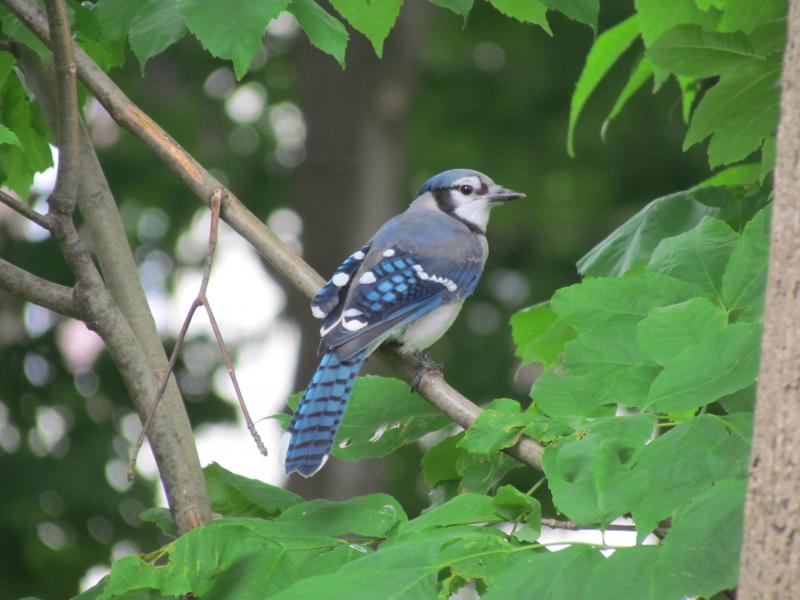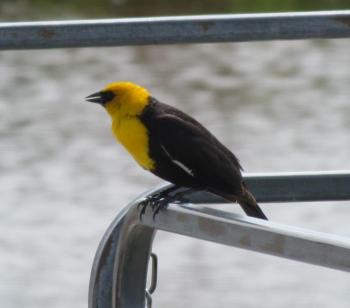It’s been most evidenced here in our neighborhood by the grackles. After the initial early spring arrival of those purple-headed, long-tailed blackbirds, we didn’t see many through June. But now it’s July, and flocks of adults with full-sized young begging voraciously for food are appearing throughout the backyards. The grackles, along with family groups of crows, blue jays, and robins, have zeroed in on a cherry tree in a neighbor’s yard. That tree has been amazingly well-ladened with beautiful red fruit. The people who live there are not harvesting the cherries themselves. This has made it a bird magnet for the wandering bird families that have shown up apparently from some distance away—again, a sign of the season.
This time of summer, between the height of breeding season and the height of fall migration, can seem like the doldrums to birders. But this is also the season of bird wanderers. Some of them are like the grackles: young birds still being fed by their parents and wandering around looking for enough food for a small and hungry gang of birds. Other mid-summer wayfarers are adult birds that lost their eggs or young and are moving around to look for food before they eventually begin heading south for the winter. Young birds that have become self-sufficient but who are also rambling about looking for food on their own represent another category of wanderer.
The other day, we noticed a kingbird flying over the house. That’s another species that we hadn’t seen much of since early June. On another day, a red crossbill flew over. That’s one we rarely see here at any time of year. We didn’t see either of these two drifters well enough to tell if they were adults or juveniles so we can’t say what motivated their roving.
Some times the wandering movements can be very extreme.
An exceptional example is the magnificent Steller’s sea-eagle that showed up a week or two ago over in New Brunswick and was last seen (as of this writing) in the Gaspé of Quebec. This is a bird that is normally found in eastern Russia about 4,500 miles away. Talk about wandering!
In late June, an adult yellow-headed blackbird showed up in Wells; another was spotted in early July in Freeport. They normally occur 600 or more miles to the West. Over in New Hampshire, a green-tailed towhee was discovered in July. That’s more than 1,500 miles from home! These and the towhee were likely birds who were unsuccessful breeding in their normal range and decided to do some late-summer searching for better conditions. Maybe drought and the extreme heat our continent has been experiencing made their normal range barren of food and/or water.
Birds wander for all sorts of reasons this time of year. Will we see more tomorrow? Finding the answer may require a little wandering of our own!
Jeffrey V. Wells, Ph.D., is a Fellow of the Cornell Lab of Ornithology and Vice President of Boreal Conservation for National Audubon. Dr. Wells is one of the nation's leading bird experts and conservation biologists and author of the “Birder’s Conservation Handbook.” His grandfather, the late John Chase, was a columnist for the Boothbay Register for many years. Allison Childs Wells, formerly of the Cornell Lab of Ornithology, is a senior director at the Natural Resources Council of Maine, a nonprofit membership organization working statewide to protect the nature of Maine. Both are widely published natural history writers and are the authors of the popular books, “Maine’s Favorite Birds” (Tilbury House) and “Birds of Aruba, Bonaire, and Curaçao: A Site and Field Guide,” (Cornell University Press).






























